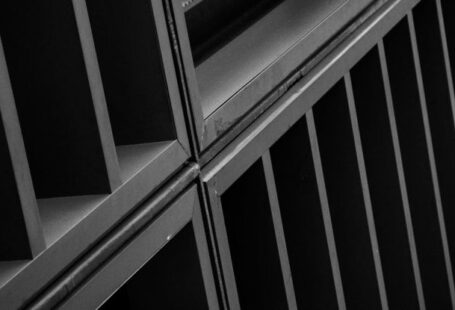Bookcases have long been a popular choice for home decor enthusiasts looking to add both functionality and style to their living spaces. Beyond their aesthetic appeal and storage capabilities, some also believe that bookcases can serve a practical purpose in absorbing sound in open areas. The question arises: Are bookcases truly effective at reducing noise levels and improving acoustics in a room? Let’s delve into this intriguing topic to uncover the truth behind this common notion.
**The Myth of Sound Absorption**
It’s a common misconception that bookcases, particularly those filled with books, can significantly absorb sound in a room. The belief stems from the idea that the books themselves act as sound-absorbing materials, dampening echoes and reducing noise levels. While it’s true that certain materials, such as thick fabrics or acoustic panels, are designed to absorb sound waves effectively, the same cannot be said for books or bookcases.
**Understanding Sound Absorption**
To understand the effectiveness of bookcases in absorbing sound, it’s essential to grasp the concept of sound absorption. When sound waves travel through a space, they can be absorbed, reflected, or transmitted by the materials they encounter. Absorption occurs when sound energy is converted into heat as it interacts with a material, reducing the reflection and transmission of sound waves. Materials with porous or fibrous textures, like acoustic foam or carpets, are excellent at absorbing sound due to their ability to dissipate energy.
**Bookcases as Sound Reflectors**
Contrary to popular belief, bookcases are more likely to act as sound reflectors rather than sound absorbers in a room. The hard surfaces of the shelves and books tend to reflect sound waves, causing them to bounce around the space and potentially amplify noise levels rather than reduce them. In open areas with minimal sound-absorbing materials, such as carpets or upholstered furniture, bookcases may contribute to increased reverberation and a noisier environment.
**Strategies for Improving Acoustics**
While bookcases may not be the most effective solution for sound absorption in open spaces, there are alternative strategies to enhance acoustics and reduce noise levels. Incorporating soft furnishings like curtains, rugs, and upholstered furniture can help absorb sound and minimize echoes. Additionally, acoustic panels or diffusers specifically designed for sound absorption offer a more targeted approach to improving the acoustics of a room.
**Maximizing the Potential of Bookcases**
Although bookcases may not be the ideal choice for sound absorption, there are ways to maximize their potential in creating a more acoustically pleasing environment. By strategically placing bookcases in areas where sound reflection is minimal and incorporating sound-absorbing materials within the shelves, such as fabric or acoustic foam, it is possible to minimize the reverberation caused by hard surfaces.
**In Conclusion: Exploring Alternatives**
In conclusion, while bookcases may add character and functionality to a room, their effectiveness at absorbing sound in open spaces is limited. To achieve optimal acoustics and reduce noise levels, it’s advisable to explore alternative solutions specifically designed for sound absorption. By combining a variety of sound-absorbing materials and strategic placement of furniture, it is possible to create a balanced and acoustically pleasant environment that enhances the overall experience of a space.





